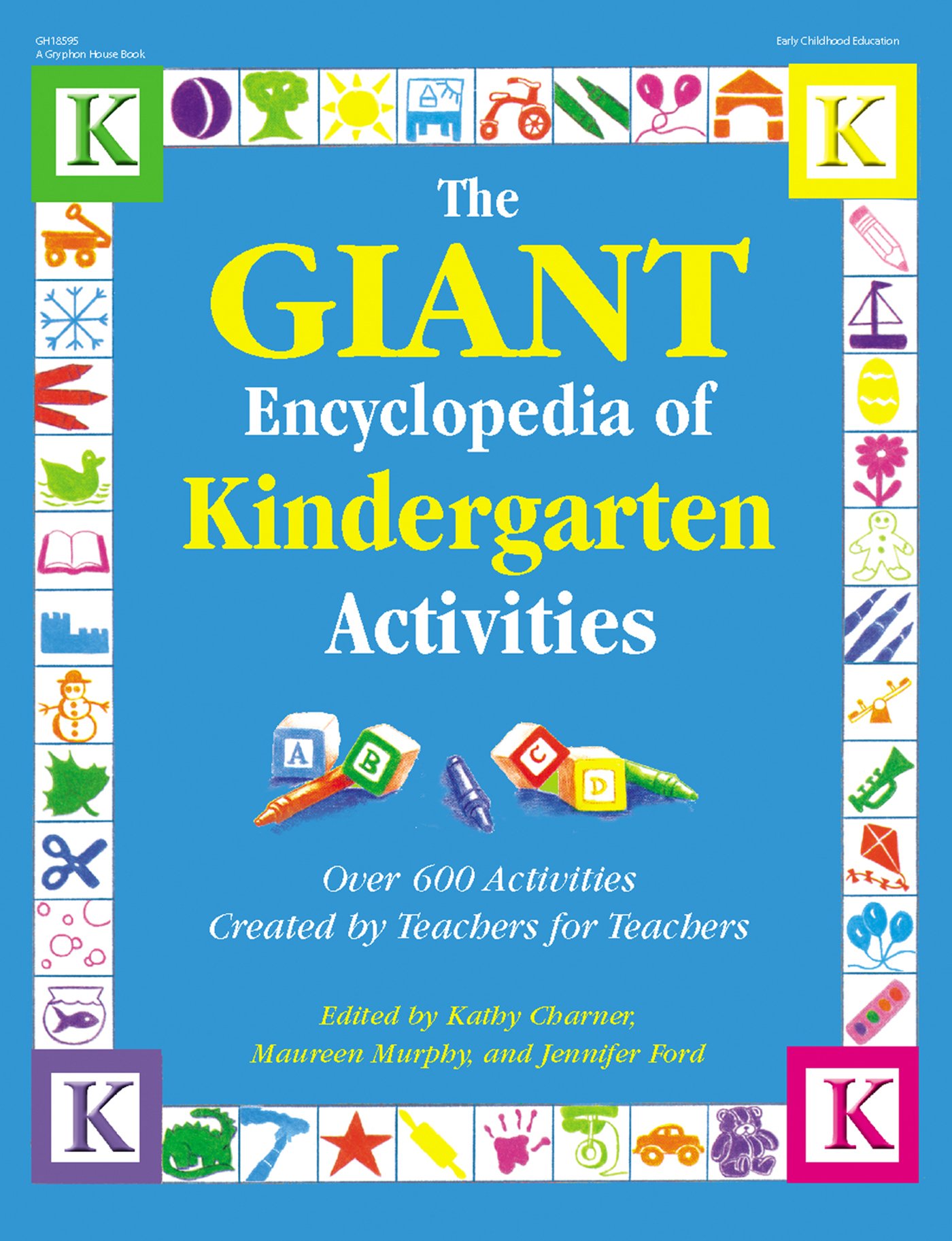- Home
- Activities
- Tips and Techniques for Working With Five-Year-Olds
Tips and Techniques for Working With Five-Year-Olds

Materials
None
Instructions
1. Remember that five-year-olds are just that. They are five years old not
young adults or big babies. They are five, unique and special.
2. Five things you should never say to a five-year-old:
* "Act your age!" They are already acting their age!
* "Grow up!" or "It's time to grow up now." Why? Being young is fun!
* "Why did you do that?" Children don't always know why they do
things, and to force them to explain is to teach them to lie to adults to
get out of trouble.
The Giant Encyclopedia of Kindergarten Activities
General Tips
203
* "What did I just tell you?" They might not know.
* "Good job!" This is a pat, overused phrase. Instead, say something
specific about the situation. For example, when Ralphie finally makes
up his naptime mat by himself, you could say, "Wow, Ralphie, I know
you must feel great about yourself. You finally conquered that mat!"
3. Five things you should say to five-year-olds at least once a day:
* "I love you!" Say it and mean it!
* "I care about you." You convey this message by noticing what the child
is doing throughout the day. Comment on the children's play daily and
take time to stop and really listen when they talk. Look at children
when you are talking together.
* "You are special to me." You can say this in many ways: a smile, a
gentle look, a kind word, a morning greeting, or noticing when the
child does something special or conquers a task.
* "You are strong!" Say this by entrusting your fives with daily chores and
classroom tasks. This goes beyond "Calendar Helper" or "Door
Monitor." There are many little things that need to be done in a typical
early childhood classroom each day and you have a classroom full of
willing volunteers at your disposal!
* "You are independent." Zippers need zippering, buttons need buttoning,
and laces need tying every day. Most fives are able to achieve
these tasks if given adequate time. Give them that time and remember
4. If you are going to be gone for a few days, leave some "Happy Notes"
hidden around the room for the children to find in your absence. Print some
happy and encouraging messages on memo pad paper or 3" x 5" note cards.
Hide these around the room. Think of places where the children will be sure
to find them, but not too fast. Following are some examples of Happy Notes:
* "Try mixing red and blue paint for a happy surprise. Let me know what
you discover when I get back." Tape this one to the art easel.
* "The animals here in the Construction Zone need a home. Can you build
one for them? If you do, ask (substitute teacher's name) to take a photograph
so I can see it when I get back." Hide this behind the blocks.
* "I miss you all so much. Will you draw some pictures for me? I would
love to have them waiting for me when I get back." Hide this on the
art shelf.
* "Take one cup of love. Add one big hug. Mix well together and save it
for me until I get back." Hide this in the play refrigerator.
* "Go find (child's name) and whisper, "(teacher's name) loves you very
much' in his or her ear." Make one of these for each child and hide
them throughout the room.
5. Is it hot enough to fry an egg on the sidewalk outside? Try it! Or try this fun
activity. Fill buckets with water and give the children large paintbrushes. Let
them paint the building, the playground equipment, the fence, or anything at
all. They may try to paint each other!
6. Remember that there is no wrong answer to the question, "What do you
think?" Ask this question to each child at least once a day. Ask them what
they think about their lunch, the truck that just went by, the color of the sky,
and so on. You will be amazed by the amount of knowledge children have!
7. Remember that the children in your care are experiencing something they
will never get a chance to experience again: their childhoods. You
undoubtedly have schedules to follow and requirements to meet, but
remember to meet the most important requirement of all the needs of the
children in your care. Give them time to be children. Let them run and play.
Give them time to be noisy and time to be quiet. Provide quiet areas for
resting and relaxing. Do not require them to participate in something every
minute of the day. Give them a few moments for just doing nothing at all.
Talk with them, listen to them, and most of all, love them.
to not hover over them.